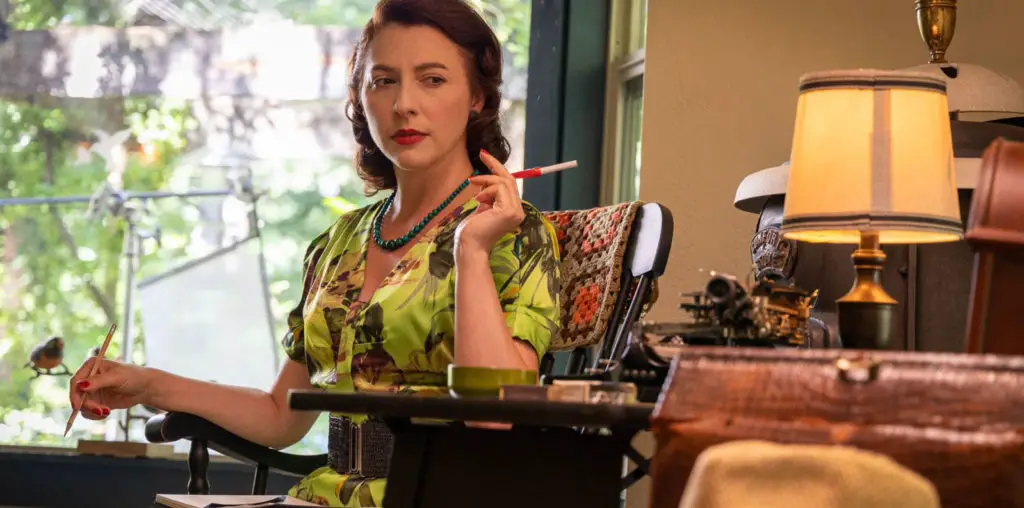
BOOTLEG FILES 458: “Triple Trouble” (1918 comedy featuring footage of Charlie Chaplin).
LAST SEEN: The film can be found on numerous video websites.
AMERICAN HOME VIDEO: It has been included in several public domain video anthologies of Chaplin’s work.
REASON FOR BOOTLEG STATUS: A film with a somewhat convoluted history.
CHANCES OF SEEING A COMMERCIAL DVD RELEASE: Only as a public domain offering.
During the course of his career, Charlie Chaplin enriched the lives of millions of people with his classic comedy films. Chaplin also enriched scores of attorneys, thanks to his frequent forays into litigation. And one of Chaplin’s most peculiar legal escapades involved one of the very worst films in the history of silent movies.
From 1915 to 1916, Chaplin worked at the Essanay Film Manufacturing Company. During this period, his popularity expanded with unprecedented speed, and he soon became one of the most famous people in the world. After creating 14 short films, Chaplin opted not to renew his contract with Essanay and, instead, signed a more lucrative deal with the rival Mutual Film Corporation.
Needless to say, Essanay was not happy about losing Chaplin. The studio recut Chaplin’s last film that he completed as part of his contract, “Burlesque on Carmen,” and included new footage featuring one of its contract players, Ben Turpin. Chaplin was outraged and filed an injunction to halt its release. However, Chaplin’s case was dismissed when a court determined that Essanay was within its rights to re-edit the film.
By 1918, Essanay’s fortunes had diminished considerably, and the studio needed a hit. By this time, Chaplin’s career had accelerated to greater heights – he had already abandoned Mutual for First National – and the cash-strapped Essanay could not possibly lure its one-time headliner back. Thus, Essanay opted to cobble together a Chaplin comedy from old footage and present it as a new production.
The Essanay staff found chunks of footage discarded from two of Chaplin’s 1915 comedies, “Work” and “Police.” Also uncovered were scenes from “Life,” a feature-length comedy that Chaplin began but later aborted when Essanay complained about the production’s length and budget. Essanay entrusted one of its few remaining stars, actor-writer-director Leo White, to create a new scenario that would weave Chaplin’s abandoned work into something resembling a coherent story called “Triple Trouble.”
“Triple Trouble” opens with outtakes from Chaplin’s 1915 comedy “Work.” The footage finds Chaplin as a janitor hired to work in a mansion. Edna Purviance is a maid who is charged with scrubbing the floors on her hands and knees, while Billy Armstrong (buried under oversized eyebrows and a beard) is the mean-spirited cook who has authority over the mansion’s employees.
In these scenes, Chaplin gets his hands all over the cook’s food, and manages to drop a can full of garbage on Edna’s newly scrubbed floor. Chaplin picks up his mess, but Edna is upset and cries over her situation. Chaplin becomes tearful and wipes his eyes, forgetting that he is still holding garbage in his hands.
The mansion belongs to the mad inventor Col. A. Nutt, who has perfected a wireless explosive devise. Diplomats from the nation of “Pretzelstrasse” want to obtain this device, and the head of their consulate (Leo White) attempts to secure this explosive gadget. His dignity is punctured twice – first by having garbage dumped on him (supposedly by Chaplin’s character) and then in the colonel’s refusal to part with his invention.
The diplomat then encounters a thief on the street, and they plot to rob the Nutt mansion for the invention. A quick-thinking cop overhears the plot and summons his comrades (who are shooting dice in a vacant lot) to take up guard in the Nutt home.
Chaplin then turns up at a grimy flophouse for a night’s rest. This footage was culled from both the unfinished “Life” and the 1915 film “Police,” and it is easy to see why Chaplin jettisoned these shots: his vision of a grimy flophouse was too realistic in depicting the unsanitary deprivation of the flophouse denizens. Chaplin engages in bits of rudeness, including the placement of a burning match in a sleeping man’s toes and the flicking of ashes into a drunk’s mouth. There is an extended sequence with a thief (Billy Armstrong, again) who helps himself to the drunk’s hidden cash. Chaplin, afraid of being robbed, put his money in his mouth – and promptly swallows it. The scene ends up in a brawl that requires police intervention. Chaplin escapes by kicking a cop in the face. If anything, this part of the film is consistent in its sheer lack of humor.
On the run, Chaplin reunites with one of the flophouse denizens – who also happens to be the thief engaged by the diplomat to rob the Nutt mansion. They abruptly return to the mansion, but the police get wise to the thief’s presence. A mad chase ensues, with Col. Nutt briefly being mistaken by the cops for the miscreant. The thief begins to fire his gun and accidentally sets off the wireless explosive. A massive explosion occurs, sending the cops into the air and propelling the thief across town and into the Pretzelstrasse consulate, where he crashes through the desk of the chief diplomat. Chaplin survives the explosion, peeking out of the rubble in an outtake from “Work.”
“Triple Trouble” never works because none of the Chaplin footage is even vaguely funny. Indeed, there was a very good reason why Chaplin never bothered to include the outtakes from “Work” and “Police” in those respective films – the situations were dull, the pacing was completely off and Chaplin came across as lethargic and unengaged. Even worse, the new footage shot by White played like third-rate Mack Sennett rip-off, complete with a lame imitation of the Keystone Kops running amok in the Nutt mansion.
When Essanay tried to dump “Triple Trouble” in theaters as a new Chaplin endeavor, the celebrated funnyman was not laughing. Chaplin, who assumed that his outtakes were thrown away, was aghast at seeing his second-rate work being screened. He consulted with his legal team, but found the same problem that prevented them from stopping the release of “Burlesque of Carmen.” Instead, Chaplin sent a telegram to the trade journal Moving Picture World denouncing “Triple Trouble” as nothing but the “discarded portions” of earlier work.
No one was fooled by Essanay’s creative editing. Moving Picture World dismissed the film as an “atrocious patch quilt of ancient slapstick reels” – a rather odd comment, considering the Chaplin scenes were a mere three years old. The Chicago Daily News defended the star, urging readers, “Don’t blame Chaplin for this film crime.” “Triple Trouble” bombed at the box office, and Essanay tried to bolster its resources by properly reissuing its older Chaplin films. Alas, it was not enough to keep the company from shutting down in 1920.
“Triple Trouble” would lapse into the public domain, and prints would wind up in a number of video anthologies of Chaplin’s silent short films, even though it was technically not a Chaplin film. However, Chaplin himself would belatedly forgive and forget his former employers by including “Triple Trouble” in the official filmography that appeared in his 1964 autobiography.
IMPORTANT NOTICE: The unauthorized duplication and distribution of copyright-protected material, either for crass commercial purposes or profit-free s***s and giggles, is not something that the entertainment industry appreciates. On occasion, law enforcement personnel boost their arrest quotas by collaring cheery cinephiles engaged in such activities. So if you are going to copy and distribute bootleg material, a word to the wise: don’t get caught. Oddly, the purchase and ownership of bootleg DVDs is perfectly legal. Go figure!


